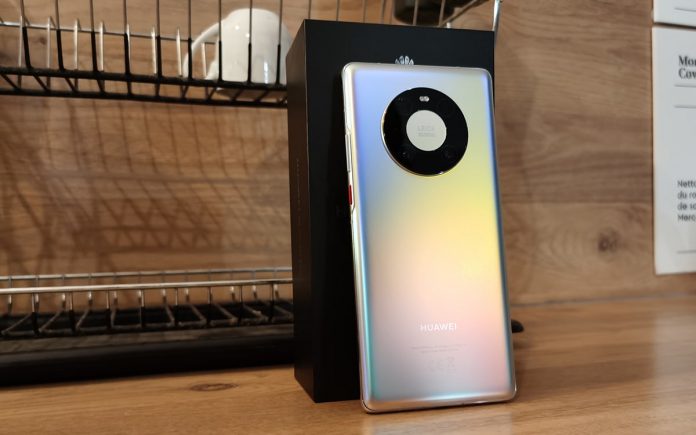The main photo sensor of the Huawei P50 would be signed Sony. This would be the largest photo sensor developed for smartphones, since it would measure 1 inch side. The component would be called IMX800. Its benefits would be numerous, but a space problem may be a problem. Explanations.
The main sensor of the P50 would be larger than that of the Mate 40 Pro (above)
For several years, Huawei has become the world reference for smartphone photography. Its partnership with Leica, which initially seemed to be a marketing operation, has turned into a superb complementarity between the optician and the developer. The P40 Pro and Mate 40 Pro, both tested in our columns confirm this. Even our colleagues at DxO Mark, photo experts, praise Huawei’s strengths in this area.
Read also – Huawei P50: the flagship would be launched on both Android and HarmonyOS
What does the P50 series have in store for us in this area? We are obviously waiting for improvements, both in the zoom part, but also in the colorimetry part. We have often found that Kirin’s image processing algorithms sometimes force a little too much on contrast, sometimes to compensate, for example, for a slight lack of light due to optics. The main sensor of the Mate 40 Pro for example opens at f/1.9, while that of the iPhone 12 Pro Max opens to f/1.6. And it’s not a question of sensor size.
A 1-inch smartphone photo sensor
An indiscretion from a relatively well-known Chinese leaker claims that the P50 will benefit from a new main sensor from Sony. This is no surprise: Sony delivers the sensors that then work with Huawei’s Kirin and Leica’s lenses (who is just an optician, not a photo sensor developer). This sensor, called IMX800,would fill the light problem with a much larger size than the Mate 40 Pro sensor: 1 inch side,compared to 0.78 inches currently.
April: world first 1″ mobile camera sensor IMX800 pic.twitter.com/t88Qqmancn
— Teme (特米)? (@RODENT950) February 24, 2021
This sensor has not been formalized by Sony, of course. However, the leaker behind the leak says it will be launched in April. According to rumors about the P50, its launch is expected in early March, which casts doubt on the veracity of the information presented here. However, it is possible that this sensor is intended only for the most ambitious models, such as the P50 Pro and the P50 Pro, whose output may have been staggered.
A sensor with more pixels or larger pixels?
The leaker is very stingy in information about the component. It does not specify the definition of the sensor. It is therefore not possible to know whether the pixel size is larger, or whether the pixels will simply be larger, to reach 64 megapixels (this corresponds to an increase of 28%). In the latter case, we could expect in the P50 a sensor capable of taking pictures with much more detail, but also a sensor capable of offering a hybrid zoom of even better quality than that of the P40 Pro.
Credits: SlashLeaks
Another hypothesis, if this sensor developed by Sony retains the definition of that of the P40 Pro, 50 megapixels,it would mean that each cell photosensitive will be larger. The ratio could be as high as 28%. That’s 1.56 micron, compared to 1.22 micron for the Mate 40 Pro. With larger pixels, you detect more light with the same exposure time. This means images with more contrast, more dive and less risk of unpleasant blur, since the pause time can even be reduced.
A photo sensor that takes up a lot of space
There would be a backlash, however: the sensor would be much bigger than the P40 Pro. It would therefore be likely that its integration would lead to a reorganization of the internal elements, or even a reduction in the number of sensors. A leak in early February states that at least one of the P50s would be equipped with five rear optics, such as the P40 Pro. It is equipped with a 50MP sensor, two sensors with telephoto lenses, a sensor with a wide-angle lens and a flight time camera.
If this information is confirmed, it would be the first time that a photo sensor developed for smartphones has reached this size. This isn’t the first time a smartphone has incorporated a 1-inch sensor. There is a precedent: the Panasonic CM1, a phone that looked more like a camera than a mobile. Its 1-inch sensor was originally developed to equip compact APNs. Unfortunately, the initiative has not been renewed, but the idea was very interesting.









